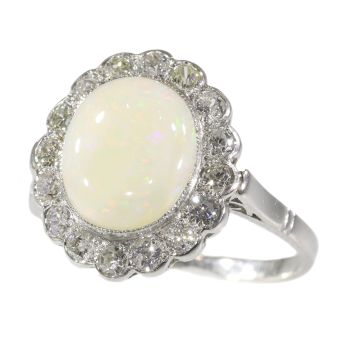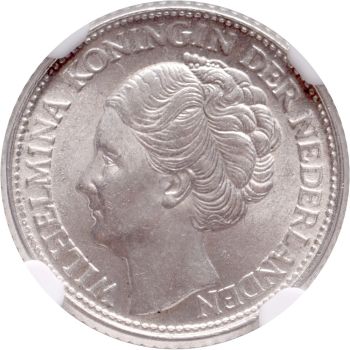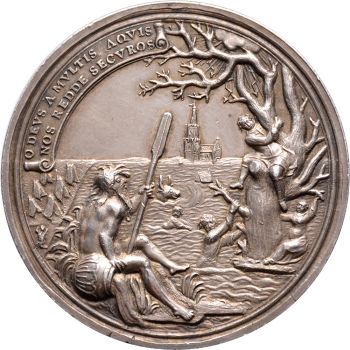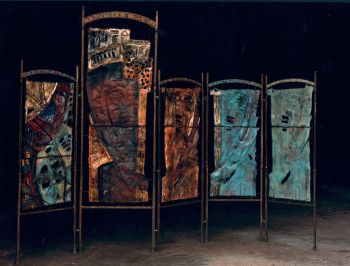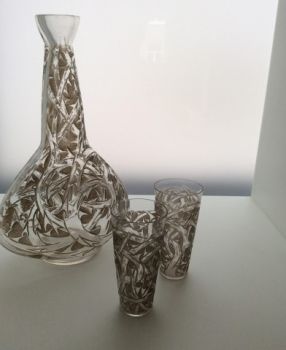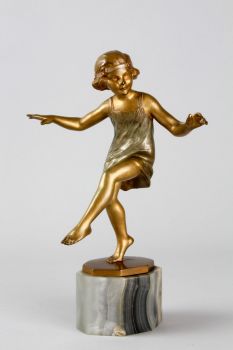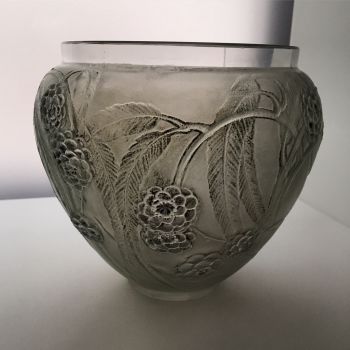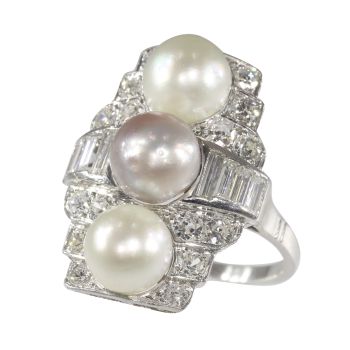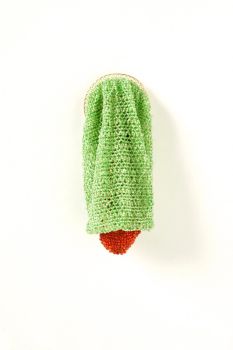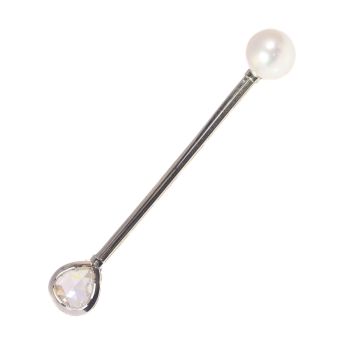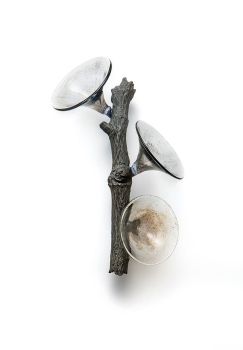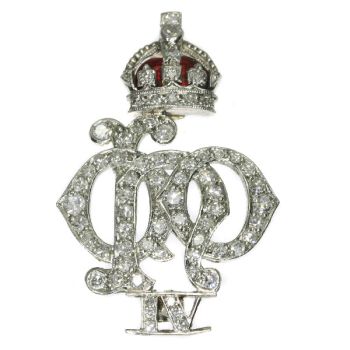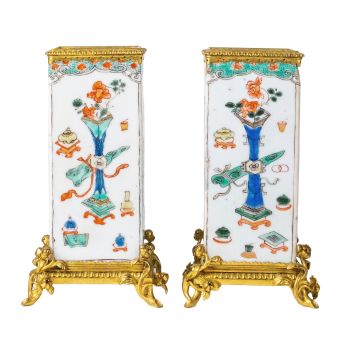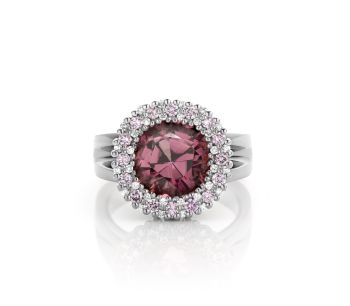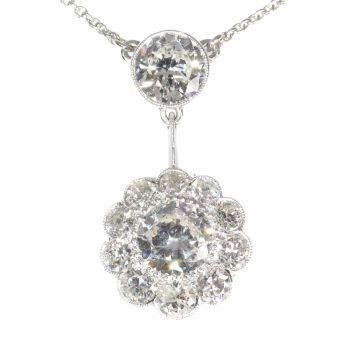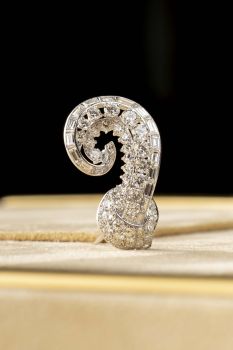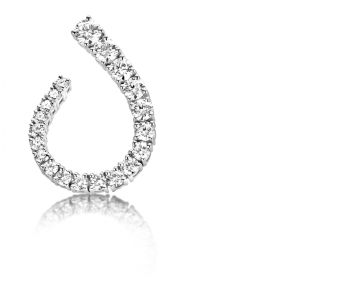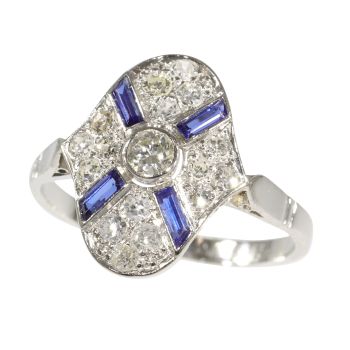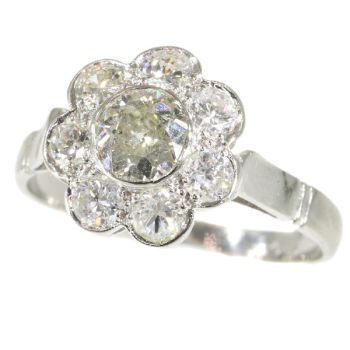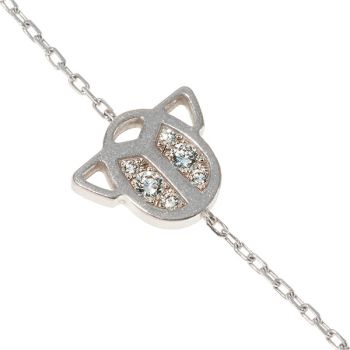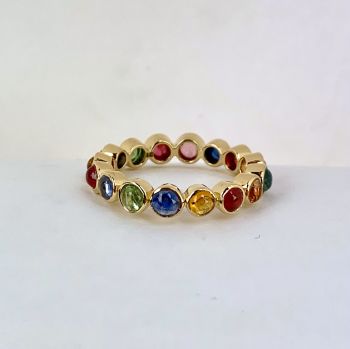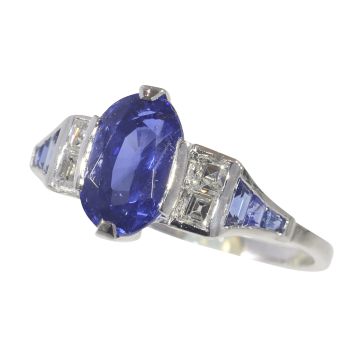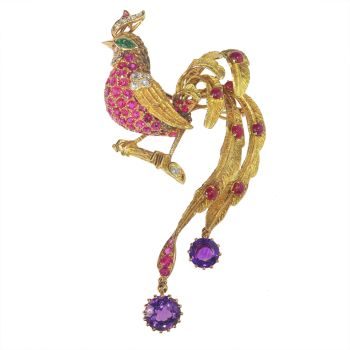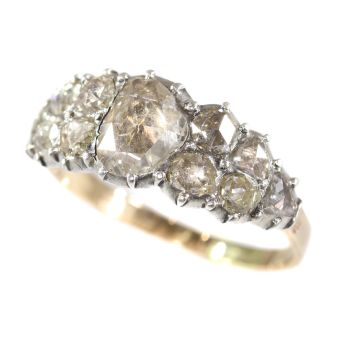Franse Art Deco zogenaamde tutti frutti broche met diamant smaragd saffier 1920
Onbekende Kunstenaar
DiamantSmaragdSaffierEdelsteen
€ 14.000
Adin Fine Antique Jewellery
- Over kunstwerk
Antique jewelry object group: brooch
Condition: very good condition
- (more info on our condition scale)
Country of origin:France
Style: Art Deco - Art Deco is an eclectic artistic and design style which had its origins in Paris in the first decades of the 20th century. The style originated in the 1920s and continued to be employed until after World War II. The term "art deco" first sawwide use after an exhibition in 1966, referring to the 1925 Exposition Internationale des Arts Décoratifs et Industriels Modernes that was the culmination of high-end style modern in Paris. Led by the best designers in the decorative arts such asfashion, and interior design, Art Deco affected all areas of design throughout the 1920s and 1930s, including architecture and industrial design, as well as the visual arts such as painting, the graphic arts and film. At the time, this style was seen aselegant, glamorous, functional and modern.
- See also: Art Decoor more info on styles
Style specifics: Abstract motives and geometrical forms are quite typical for the Art Deco period. Art Deco moved away from the soft pastels and organic forms of its style predecessor, Art Nouveau, and embraced influences from many different styles and movements of the early 20th century, including Neoclassical, Constructivism, Cubism, Modernism, and Futurism. Its popularity peaked in Europe during the Roaring Twenties and continued strongly in the United States through the 1930s. Although many design movements havepolitical or philosophical roots or intentions, Art Deco was purely decorative.
Period: ca. 1920
- (events & facts of this era, poetry of this era, fashion of this era)
Source of inspiration: Mother Nature
Material: The brooch is in platinum and the pin in 18K white gold (as normal in that era and hallmarked as such)
- (more info on precious metals)
Extra information: Tutti Frutti - Jewelry like this, set with brightly colored gemstones polished as leaves are called "Tutti Frutti jewelry". The first Tutti Frutti piece was a necklace commissioned by Queen Alexandra and designed by Pierre Cartier in 1901. Tutti Fruttijewel designs are considered to be a perfect mix of East and West because they are made up of brightly colored gemstones (like sapphires, rubies and emeralds) carved using Indian techniques and set in French platinum and diamond mountings.The stylebecame extremely popular during the 1920's, but it wasn't named 'Tutti Frutti' until 1970.
Diamonds:42 old brilliant cut diamonds with a total estimated weight of approx. 2.94 crt. (approximate color and clarity G/J, vs/si)and ten smaller old brilliant cut diamonds with a total estimated weight of approx. 0.15 crt.
Note: All diamond weights, color grades and clarity are approximate since the stones were not removed from their mounts to preserve the integrity of the setting.
Total diamond weight: approx. 3.09 crt.
Precious stones: Four sapphires andthree emeralds, all polished and engraved as leaves.
- (more info on precious stones)
Birthstones: Diamond is the birthstone (or month stone) for April, sapphire for September and emerald for May.
- (more info on birthstones)
Makers mark: The makers hallmark is eligible although we think we recognize the letter C as part of this hallmark.
Hallmarks: The French control marks representing an eagle’s head (that was in use in France from about 1838) next to the dog's head which is the official French hallmark for jewelry containing or made of platinum and that has been used since 1912..
- (more info on hallmarks)
Dimensions: 2,88 cm (1,13 inch) x 2,78 cm (1,09 inch)
Weight: 9,30 gram (5,98 dwt)
Reference Nº: 16123-0060
Copyright photography: Adin, fine antique jewelry
- Over kunstenaar
Het kan voorkomen dat een kunstenaar of maker onbekend is.
Voor sommige werken is het niet te bepalen door wie het gemaakt is of dat het is gemaakt door (een groep) ambachtslieden. Voorbeelden zijn beelden uit de Oudheid, meubels, spiegels of handtekeningen die vaak niet duidelijk of leesbaar zijn. Maar ook sommige werken zijn helemaal niet gesigneerd.
Ook kunt u de volgende beschrijving vinden:
•"Toegeschreven aan …." waarschijnlijk een werk van de kunstenaar maar niet zeker of gedeeltelijk
•“Atelier van ….” of werkplaats van” een werk uitgevoerd in het atelier of atelier van de kunstenaar, eventueel onder zijn toezicht
•“Cirkel van ….” een werk uit de periode van de kunstenaar die zijn invloed laat zien, nauw verbonden met de kunstenaar maar niet noodzakelijkerwijs zijn leerling
•“Stijl van ….” of “Volger van ….” een werk uitgevoerd in de stijl van de kunstenaar, maar niet noodzakelijk door een leerling; kan eigentijds of bijna eigentijds zijn
•“Wijze van ….” een werk in de stijl van de kunstenaar maar van latere datum
•"Na …." een kopie (van welke datum dan ook) van een werk van de kunstenaar
•“Getekend…”, “Gedateerd….” of “Ingeschreven” dan is het werk gesigneerd/ gedateerd/ ingeschreven door de kunstenaar. De toevoeging van een vraagteken duidt op een element van twijfel
•"Met handtekening ...", "Met datum ...", "Met opschrift..." of “Draagt signatuur/datum/opschrift” dan is de handtekening/datum/opschrift toegevoegd door iemand anders dan de kunstenaar
Bent u geïnteresseerd om dit kunstwerk te kopen?
Related artworks
Onbekende Kunstenaar
EEN JAPANSE KLEINE SAWASA 'PERZIK-VORMIGE' KROESKOPearly 18th
Prijs op aanvraagZebregs & Röell - Fine Art - Antiques
1 - 4 / 12Onbekende Kunstenaar
Vroege Art Deco broche1920
Prijs op aanvraagAns Hemke-Kuilboer Juwelier & Antiquair
1 - 4 / 24- 1 - 4 / 24
Gyrinus
Stippen gegraveerd glas met putti1764 - 1766
Prijs op aanvraagPeter Korf de Gidts - Antiquairs
Onbekende Kunstenaar
Gevleugelde Venetiaanse Beker1624 - 1626
Prijs op aanvraagPeter Korf de Gidts - Antiquairs
1 - 4 / 24- 1 - 4 / 24
Jean-Claude Champagnat
French 18K gold vintage 1960's bejeweled bird of paradise brooch by Jean-Claude Champagnat1960
€ 12.500Adin Fine Antique Jewellery
 Gecureerd door
Gecureerd doorDanny Bree
1 - 4 / 12








